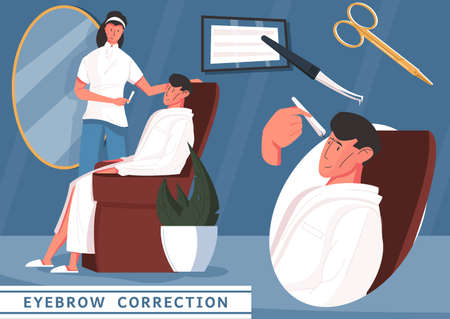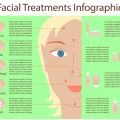1. Initial Consultation and Assessment
Your journey begins with a consultation where your doctor will evaluate your eyelid concerns, discuss your aesthetic goals, and review your medical history to determine the best approach for you. This initial meeting is essential to ensure that eyelid tightening is the right procedure for your needs.
Understanding Your Concerns
During the consultation, your doctor will ask about any issues you are experiencing with your eyelids, such as sagging skin, puffiness, or drooping. They will also inquire about how these concerns impact your appearance and vision.
Discussing Your Aesthetic Goals
Your doctor will work with you to understand what you hope to achieve from the procedure. Whether you want a more youthful look or improved eyelid function, communicating your expectations clearly will help guide the treatment plan.
Medical History Review
Your doctor will review your medical history to ensure you are a good candidate for the procedure. Certain health conditions or medications may affect the safety and outcome of the treatment.
Key Factors Assessed During Consultation
| Factor | Why It Matters |
|---|---|
| Eyelid Condition | Evaluates sagging, puffiness, or excess skin |
| Aesthetic Goals | Helps align expectations with realistic outcomes |
| Medical History | Identifies potential risks and contraindications |
| Skin Type & Elasticity | Affects healing and final results |
| Previous Surgeries | Might influence treatment options |
Treatment Recommendations
Based on the assessment, your doctor will recommend the best approach for your eyelid tightening procedure. This may involve non-surgical treatments like laser therapy or surgical options such as blepharoplasty. They will explain the benefits, risks, and expected recovery time so you can make an informed decision.
2. Discussion of Procedure Options
Your provider will explain the different eyelid tightening techniques available, including both surgical and non-surgical options. Understanding these choices will help you make an informed decision based on your goals, recovery time, and comfort level.
Surgical vs. Non-Surgical Eyelid Tightening
There are two main categories of eyelid tightening procedures: surgical and non-surgical. Each has its own benefits and considerations. Below is a comparison to help you understand the differences:
| Procedure Type | Method | Recovery Time | Results |
|---|---|---|---|
| Surgical (Blepharoplasty) | Removes excess skin and fat through incisions | A few weeks | Long-lasting, dramatic improvement |
| Non-Surgical (Laser, Radiofrequency, Fillers) | Tightens skin or adds volume without incisions | A few days to a week | Mild to moderate improvement, temporary results |
Surgical Eyelid Tightening (Blepharoplasty)
If you have significant sagging skin or droopy eyelids, your provider may recommend blepharoplasty. This procedure involves making small incisions to remove excess skin and fat, creating a more youthful appearance. Recovery usually takes a few weeks, with some swelling and bruising expected.
Who Is a Good Candidate for Surgery?
You might be a good candidate for surgical eyelid tightening if you:
- Have severe sagging that affects your vision
- Want long-term results
- Are in good overall health
- Aren’t prone to excessive scarring or healing issues
Non-Surgical Eyelid Tightening Options
If youre looking for a less invasive approach with minimal downtime, non-surgical treatments might be right for you. These include:
Laser Skin Tightening
This technique uses laser energy to stimulate collagen production, helping to firm and tighten the eyelid area over time.
Radiofrequency (RF) Treatments
RF therapy delivers controlled heat to the skin, encouraging collagen remodeling and gradual tightening.
Eyelid Fillers
If volume loss is causing a hollowed appearance around the eyes, dermal fillers can restore fullness for a rejuvenated look.
Selecting the Right Option for You
Your provider will assess your eyelids condition, skin type, and personal goals before recommending the most suitable procedure. Whether you opt for surgery or a non-invasive treatment, understanding the benefits and potential risks will help you feel confident in your decision.

3. Preparing for the Procedure
Before your eyelid tightening procedure, your provider will give you detailed instructions to ensure everything goes smoothly. These guidelines may include temporary lifestyle adjustments, medication restrictions, and what to expect on the day of your treatment.
Lifestyle Adjustments
In the days or weeks leading up to your procedure, you may need to make certain changes to your routine. These adjustments help minimize risks and support optimal healing.
| Adjustment | Reason |
|---|---|
| Avoid smoking and alcohol | Reduces complications and promotes better healing |
| Limit caffeine intake | Helps regulate blood pressure before the procedure |
| Stay hydrated | Keeps skin and body in optimal condition for recovery |
| Avoid excessive sun exposure | Prevents skin sensitivity and irritation before treatment |
Medication Guidelines
Your provider may ask you to adjust or temporarily stop taking certain medications that could increase bleeding or interfere with the procedure.
- Avoid blood-thinning medications: Aspirin, ibuprofen, and certain supplements (like fish oil or vitamin E) should be discontinued as directed by your doctor.
- Follow prescription guidelines: If you take prescribed medications, discuss them with your provider to determine if any adjustments are needed.
- Mention allergies: Inform your provider about any known drug allergies to ensure a safe experience.
The Day of Your Procedure
Your preparation on the day of treatment is just as important as the steps taken beforehand. Here’s what you can expect:
- Avoid makeup and skincare products: Keep your face clean and free from lotions, creams, or cosmetics.
- Dress comfortably: Wear loose-fitting clothing that does not need to be pulled over your head.
- No heavy meals: Eat a light meal before arriving unless instructed otherwise.
- Arrange transportation: Some procedures require sedation, so plan for someone to drive you home afterward.
- Arrive early: Give yourself extra time for check-in and last-minute questions with your provider.
If you have any concerns or questions before your procedure, don’t hesitate to reach out to your provider. Being well-prepared will help you feel more confident and comfortable on the day of your eyelid tightening treatment.
4. What Happens During the Procedure
Whether undergoing a surgical or non-surgical treatment, your provider will walk you through each step, including anesthesia options, procedure duration, and what sensations you might experience. Knowing what to expect can help you feel more comfortable and prepared for your eyelid tightening procedure.
Anesthesia Options
The type of anesthesia used will depend on whether youre having a surgical or non-surgical eyelid tightening procedure:
| Anesthesia Type | Description | Commonly Used For |
|---|---|---|
| Local Anesthesia | Numbs only the treatment area while you remain awake. | Non-surgical treatments or minor surgical procedures. |
| IV Sedation | You remain relaxed and drowsy but not fully unconscious. | Surgical eyelid tightening with minimal discomfort. |
| General Anesthesia | You are completely asleep during the procedure. | Surgical eyelid tightening requiring extensive correction. |
Surgical Eyelid Tightening Procedure
If you are undergoing a surgical eyelid tightening procedure, here’s what typically happens:
Step 1: Marking the Treatment Area
Your surgeon will mark incision points based on your unique anatomy to ensure natural-looking results.
Step 2: Incision and Tissue Adjustment
The surgeon makes small incisions along the natural creases of your eyelids. Excess skin and fat may be removed or repositioned to create a smoother appearance.
Step 3: Closing the Incisions
The incisions are carefully closed with fine sutures to minimize scarring. Some patients may receive dissolvable stitches that do not require removal.
Non-Surgical Eyelid Tightening Procedure
If you opt for a non-surgical approach, such as laser treatment or radiofrequency therapy, the process is different:
Step 1: Skin Preparation
Your provider cleanses the treatment area and may apply a numbing cream for comfort.
Step 2: Energy-Based Treatment Application
A specialized device delivers controlled energy (laser, ultrasound, or radiofrequency) to stimulate collagen production and tighten skin.
Step 3: Cooling and Recovery
The treated area is cooled to reduce discomfort. You can usually return to normal activities immediately after treatment.
5. Recovery and Aftercare
After your eyelid tightening procedure, proper aftercare is essential to ensure a smooth recovery and achieve the best possible results. Understanding what to expect during the healing process can help you feel more prepared and confident.
Post-Procedure Care
Following your eyelid tightening treatment, your provider will give you specific aftercare instructions. Here are some general guidelines to follow:
- Keep the area clean: Gently cleanse your eyelids as directed to prevent infection.
- Avoid rubbing or touching: This helps reduce irritation and promotes faster healing.
- Use prescribed medications: If your doctor prescribes ointments or eye drops, use them as instructed.
- Apply cold compresses: This can help minimize swelling and discomfort in the first few days.
- Limit physical activity: Avoid strenuous exercise or heavy lifting for at least a week.
Potential Side Effects
Mild side effects are normal after an eyelid tightening procedure. These typically subside within a few days to weeks. Common side effects include:
| Side Effect | Description |
|---|---|
| Swelling | Mild to moderate swelling around the eyes, which usually decreases within a week. |
| Bruising | Slight bruising that fades over time, typically within 7-10 days. |
| Sensitivity | The treated area may feel tender or sensitive for a few days. |
| Tightness | You may experience a slight tight sensation as your skin heals. |
Healing Time
The recovery period varies depending on the type of eyelid tightening procedure performed. In general, most patients experience significant improvement within two weeks. However, full results may take several weeks to fully develop as the skin continues to heal and adjust.
A General Timeline of Recovery
- First Few Days: Swelling and mild discomfort are common. Use cold compresses as needed.
- Week 1: Most bruising starts to fade, and any stitches (if applicable) may be removed.
- Weeks 2-4: Swelling significantly reduces, and the eyes appear more refreshed.
- Around Week 6: Final results become more noticeable as the skin fully heals.
Follow-Up Appointments
Your provider may schedule follow-up visits to monitor your progress and ensure optimal healing. During these appointments, they will check for any complications and provide further guidance on maintaining your results.
Tips for a Smooth Recovery
- Avoid direct sun exposure: Wear sunglasses and use sunscreen to protect the delicate skin around your eyes.
- Sleep with your head elevated: This can help reduce swelling during the first few nights.
- Avoid makeup until cleared by your doctor: Using makeup too soon can increase the risk of infection or irritation.
- Eeat a healthy diet:
If you have any concerns during recovery, don’t hesitate to reach out to your provider for advice. Following post-procedure care recommendations will help you achieve beautiful, long-lasting results from your eyelid tightening treatment.

